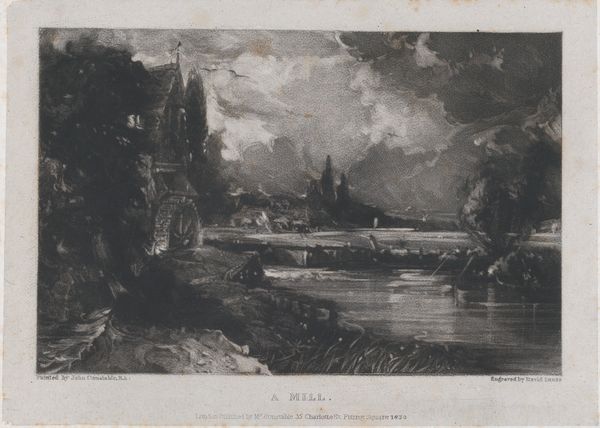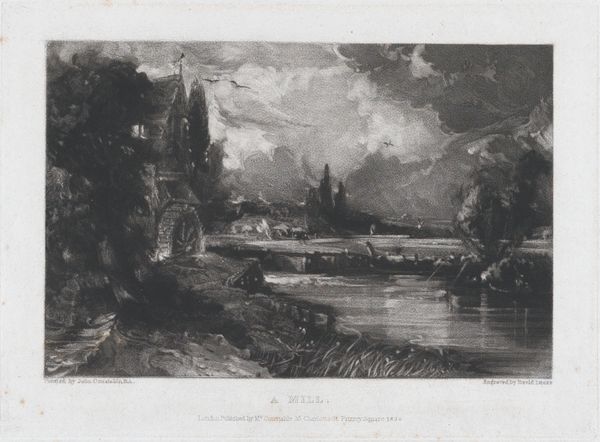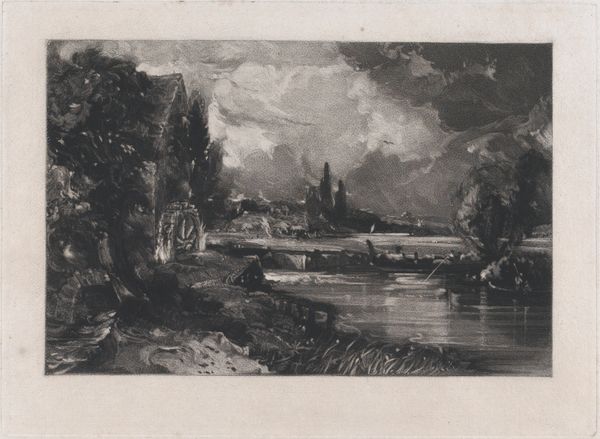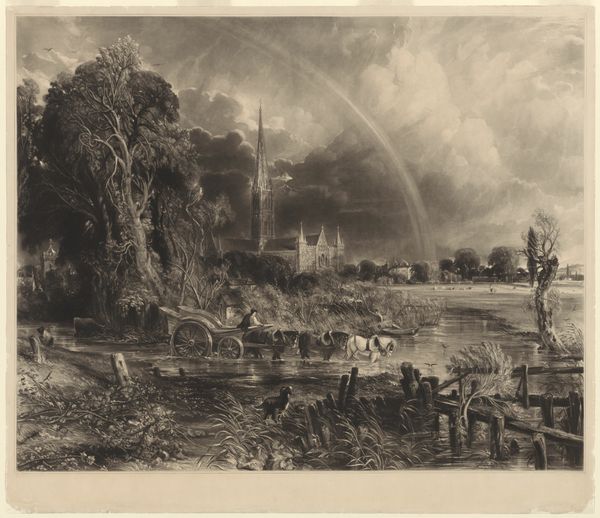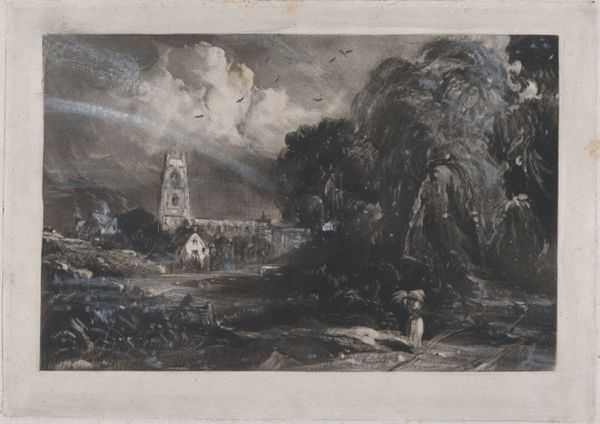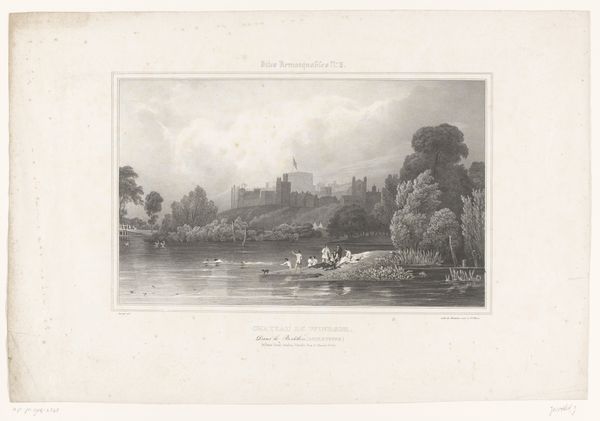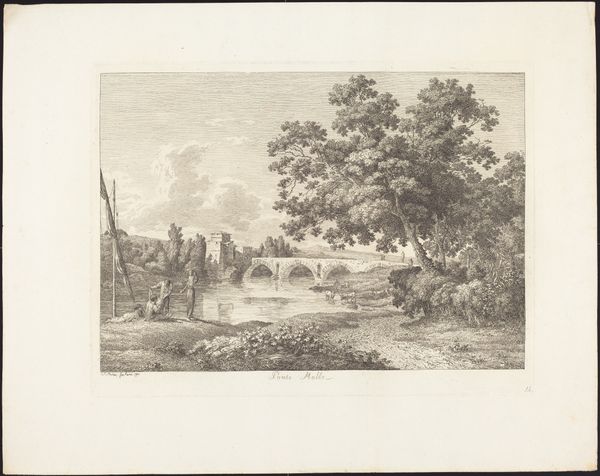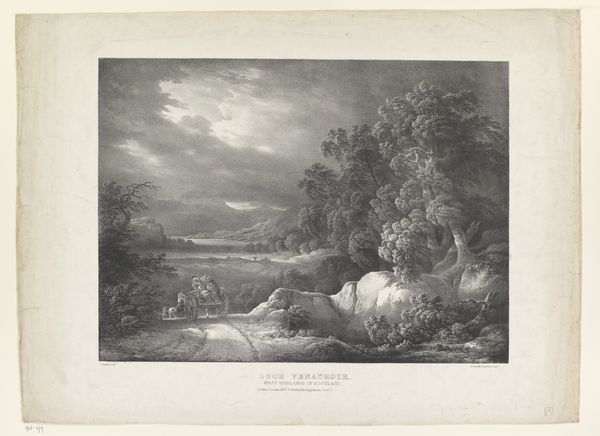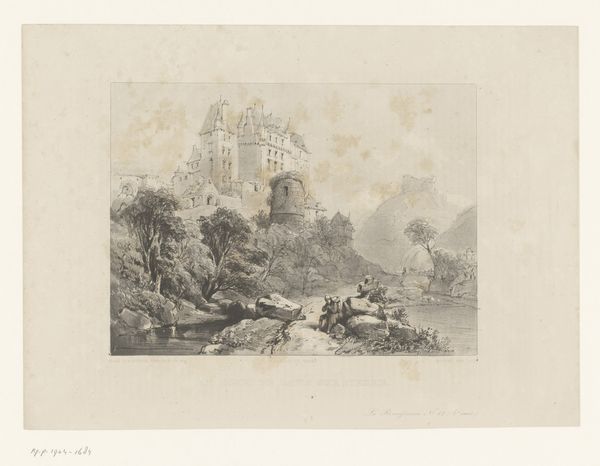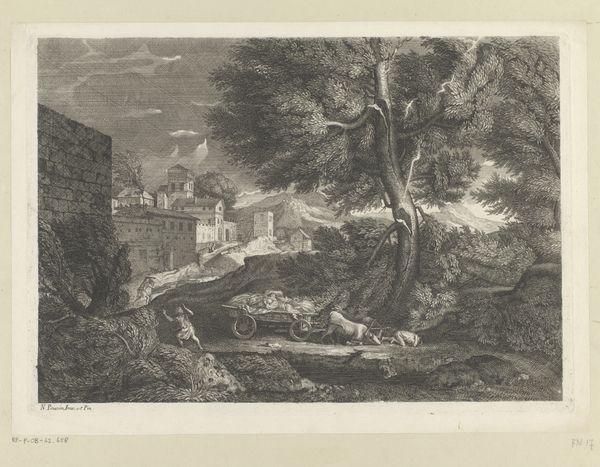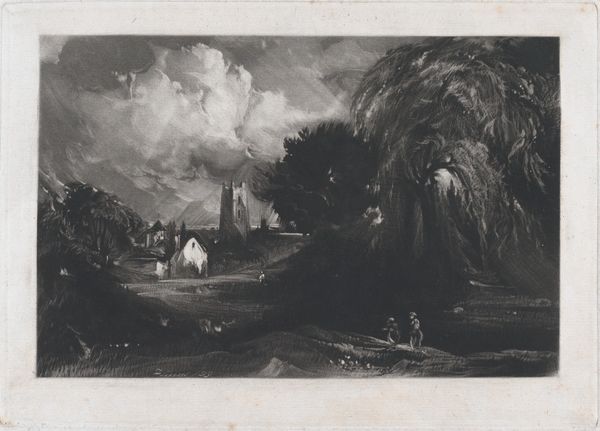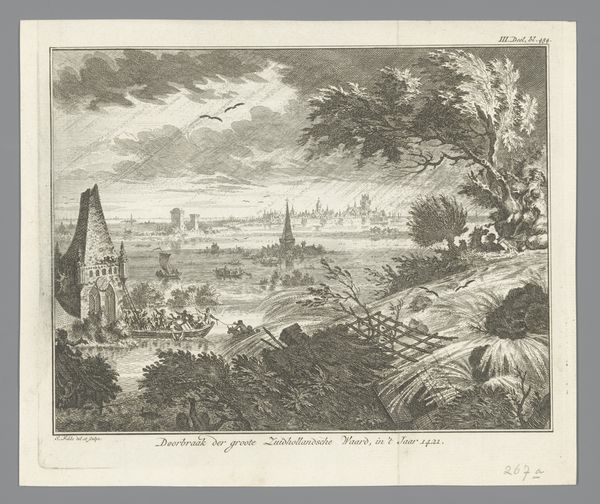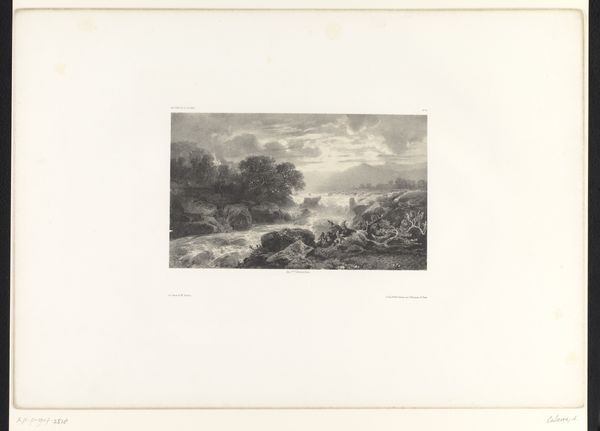
drawing, print, engraving
#
drawing
# print
#
landscape
#
romanticism
#
engraving
Dimensions: Image: 5 9/16 × 8 1/2 in. (14.1 × 21.6 cm) Sheet (trimmed within plate): 7 1/16 × 9 13/16 in. (17.9 × 24.9 cm)
Copyright: Public Domain
Curator: Let’s consider David Lucas's engraving, "A Mill," made in 1832. Lucas painstakingly reproduced Constable’s painted landscape. The labor of transforming paint into the reproducible medium of engraving interests me greatly. What do you make of it? Editor: It feels very picturesque. Almost staged, or deliberately composed. There are these two figures on the bottom left. And the spire of a church. What draws your attention here? Curator: Look at the water—how is its reflective quality rendered in this medium? The material constraints of engraving – the lines, the cross-hatching – how do they alter the sensation of light and atmosphere conveyed by paint? The process impacts what is visible in the print. Editor: I see that! It looks more dramatic, or heavy almost? Like the light is weighted. It feels less fleeting and more fixed compared to a landscape painting. Why do you think that is? Curator: Precisely! And note the lines that construct the sky and clouds—those are not mimicking the softness of clouds. Instead, they communicate a specific labor, the repetitive action of carving the plate, consider how that production, that process changes the feeling and texture, even. It’s a different material experience, both to make and to observe. Editor: So, the limitations of engraving give the image a completely different weight and texture. It moves the focus from just *seeing* a pretty picture to considering the act of *making* it. I’m curious, would this be a comment on industrialisation, where everything is duplicated? Curator: A pertinent question. How does reproductive engraving, with its implied mass distribution, alter our appreciation of "original" artwork or unique artistic skill? Think about who this would reach compared to an oil painting…and the purpose it could serve. Editor: This makes me think about how a contemporary photograph becomes 'art'. The artist may have carefully constructed it, however the means of image making are immediately available to most. And whether art is considered high art or craft becomes more about audience consumption. Thank you! Curator: Exactly. Let’s think further about how the means of artistic production influence not just what is represented but also its place in culture.
Comments
No comments
Be the first to comment and join the conversation on the ultimate creative platform.
